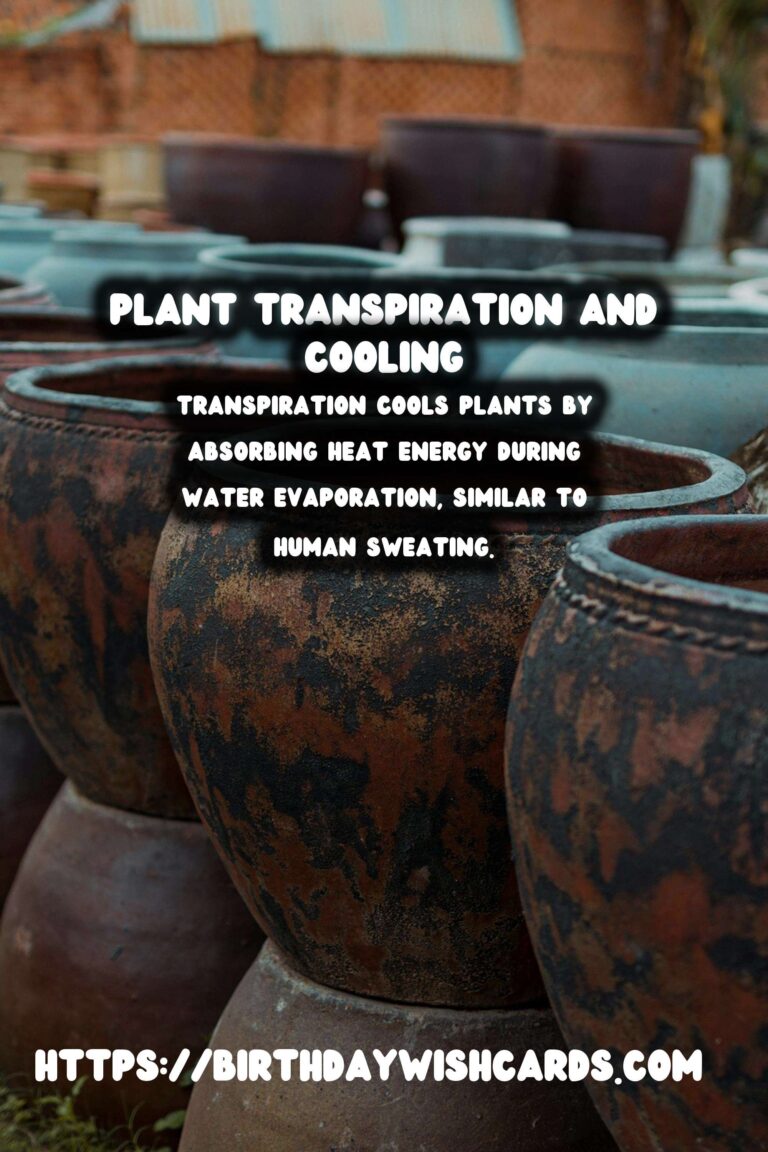
Plant transpiration is a vital physiological process that plays a significant role in the cooling of plants and the surrounding environment. This process involves the movement of water from the roots through the plant to small pores on the underside of leaves, known as stomata, where it evaporates into the atmosphere. Understanding this process is crucial for agriculture, forestry, and environmental management.
The Mechanism of Transpiration
Transpiration begins at the roots of a plant, where water is absorbed from the soil. This water travels upward through the plant’s xylem vessels, a process driven by capillary action and cohesion-tension. As water molecules evaporate from the stomata, they create a negative pressure that pulls more water up from the roots.
The stomata are microscopic openings that regulate gas exchange, allowing carbon dioxide in for photosynthesis and releasing oxygen and water vapor. The opening and closing of stomata are controlled by guard cells, which respond to environmental conditions such as light, humidity, and carbon dioxide levels.
Transpiration’s Role in Plant Cooling
One of the primary functions of transpiration is to cool the plant. As water evaporates from the leaf surface, it absorbs heat energy from the plant, similar to how sweating cools the human body. This cooling effect prevents overheating, protecting the plant’s cellular structures and maintaining optimal conditions for enzymatic reactions.
This cooling mechanism is particularly important in hot and arid environments, where plants are exposed to intense sunlight and high temperatures. By maintaining a stable leaf temperature, transpiration supports efficient photosynthesis and overall plant health.
Environmental Impact of Transpiration
Transpiration also has a broader environmental impact. The large volumes of water vapor released by plants contribute to atmospheric humidity, influencing local and regional climate patterns. Forests, for instance, play a critical role in the water cycle, with transpiration accounting for a significant portion of atmospheric moisture.
This process helps cool the Earth’s surface, mitigate heat waves, and regulate the climate. In urban areas, maintaining green spaces with trees and plants can reduce the urban heat island effect, lowering temperatures and improving air quality.
Factors Affecting Transpiration
Several environmental factors influence the rate of transpiration, including temperature, humidity, wind, and light intensity. Higher temperatures and lower humidity levels tend to increase transpiration rates, as they enhance the evaporation potential of water from the leaf surface.
Wind can remove the humid air layer surrounding the leaf, increasing the concentration gradient and promoting faster transpiration. Similarly, light intensity affects the opening of stomata, with brighter conditions often leading to increased transpiration during daylight hours.
Managing Transpiration in Agriculture
Understanding and managing transpiration is essential in agriculture to optimize water use and improve crop yields. Farmers can use irrigation techniques, such as drip irrigation, to supply water directly to the root zone, minimizing evaporation and ensuring efficient use of water resources.
Additionally, selecting crop varieties with appropriate transpiration rates for specific climates can enhance productivity and sustainability. Research continues to explore plant breeding and genetic engineering to develop crops with improved water-use efficiency and resilience to climate change.
Conclusion
Transpiration is a crucial process that not only supports plant health and growth but also plays a significant role in cooling and environmental regulation. By understanding the dynamics of transpiration, we can better manage natural and agricultural ecosystems, contributing to sustainable development and climate resilience.
Plant transpiration involves the movement of water from the roots to the leaves, where it evaporates into the atmosphere. Transpiration cools plants by absorbing heat energy during water evaporation, similar to human sweating. The process significantly impacts the environment by contributing to atmospheric humidity and influencing climate patterns. Factors like temperature, humidity, wind, and light intensity affect the rate of transpiration. Managing transpiration in agriculture can optimize water use and improve crop yields. 
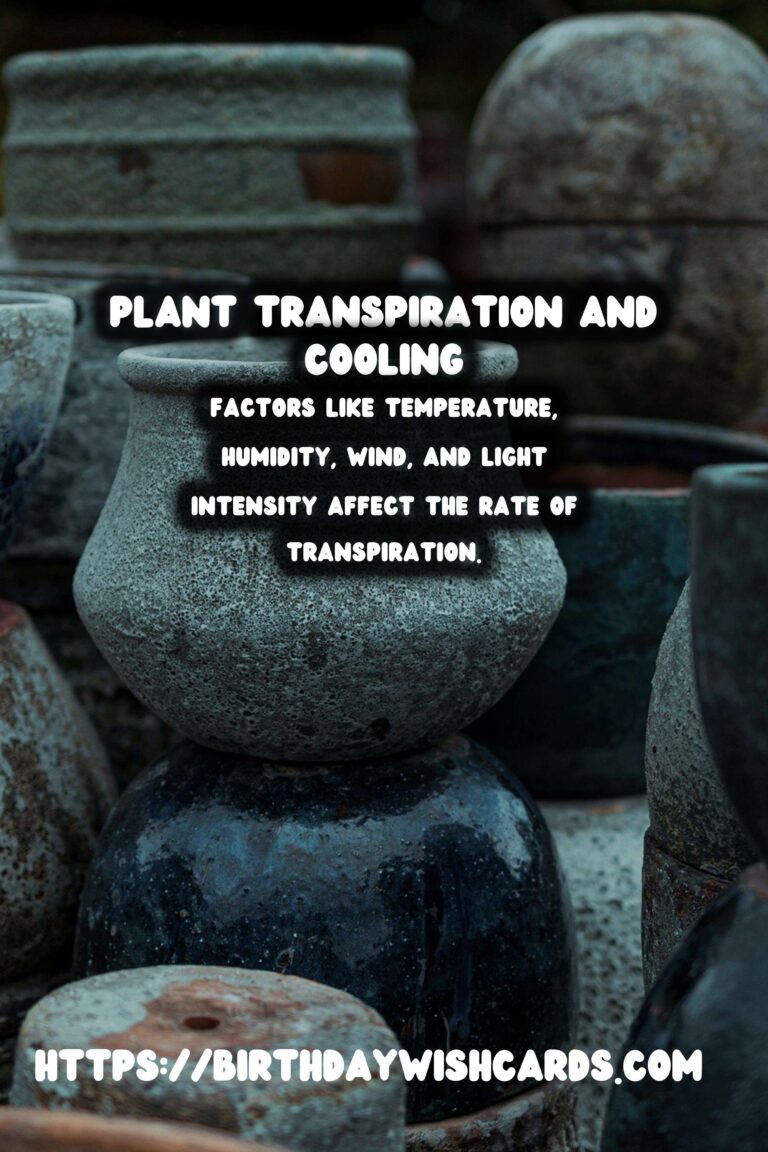



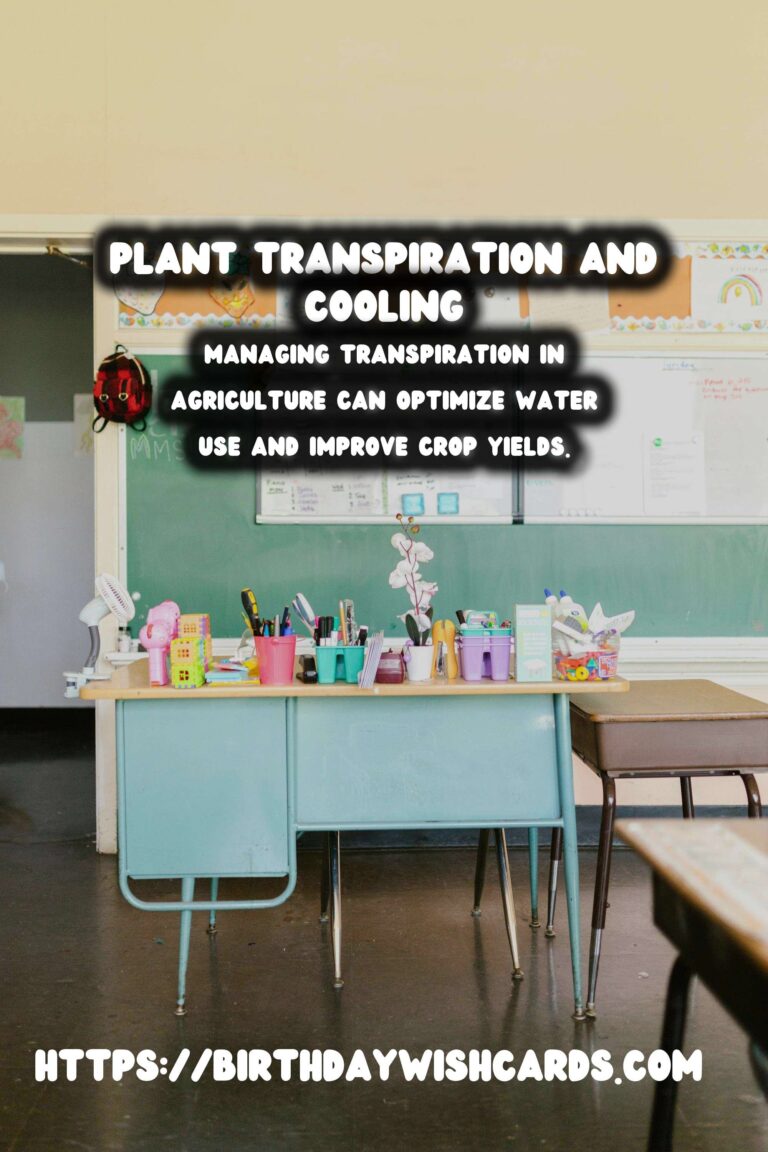
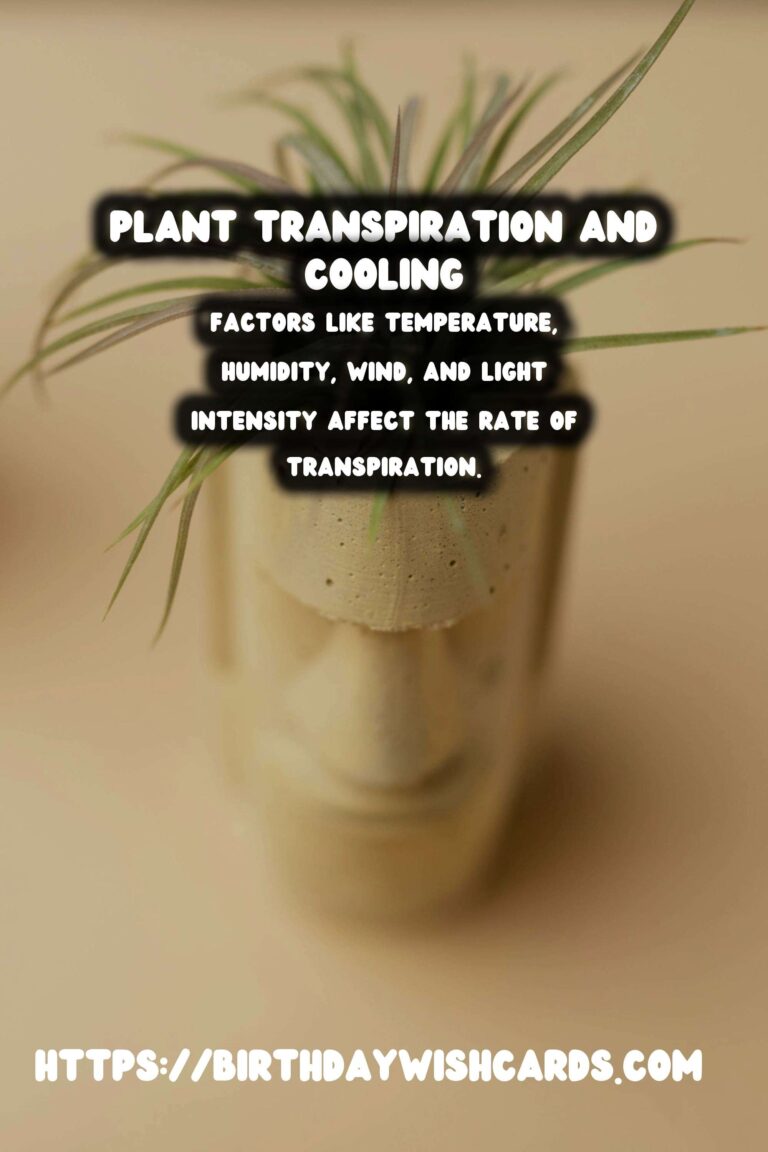
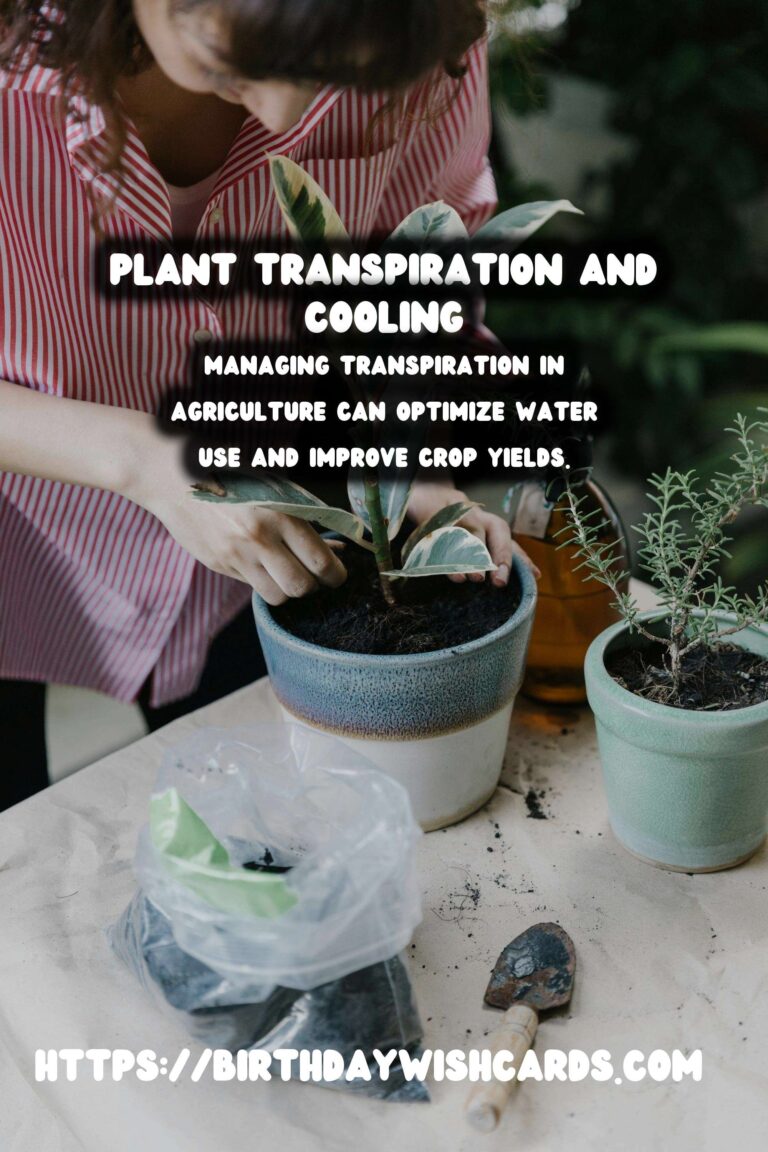
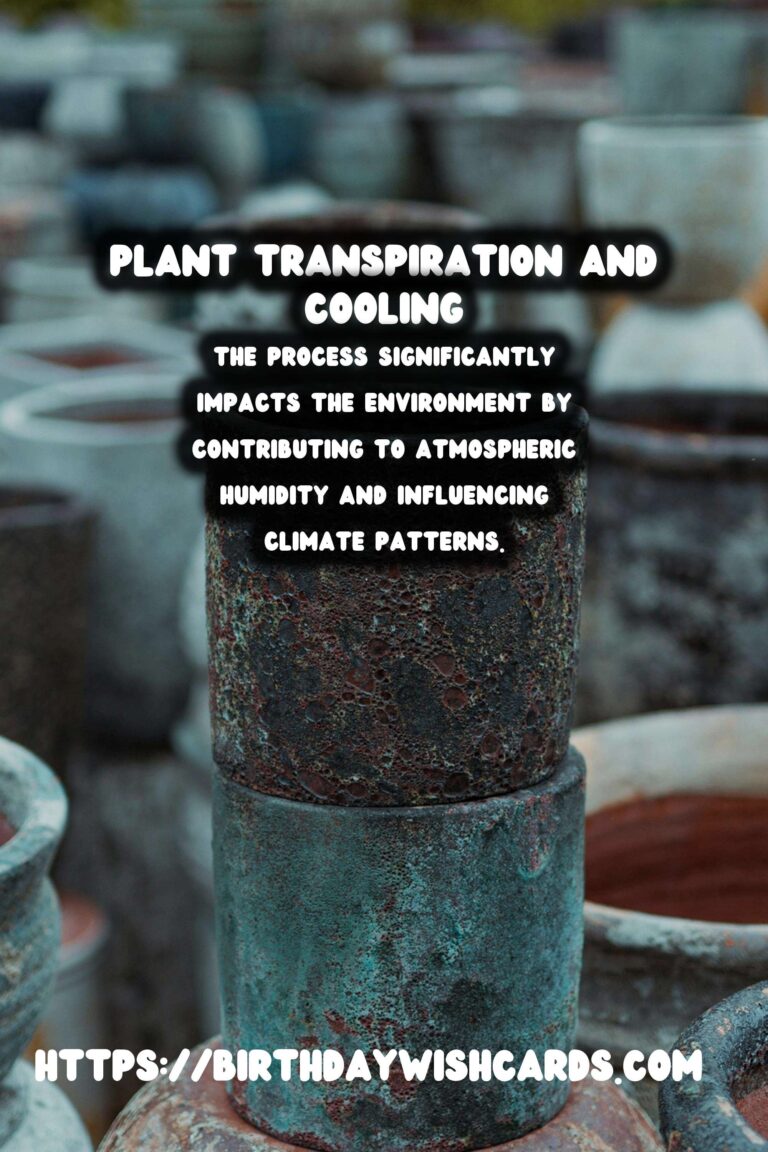
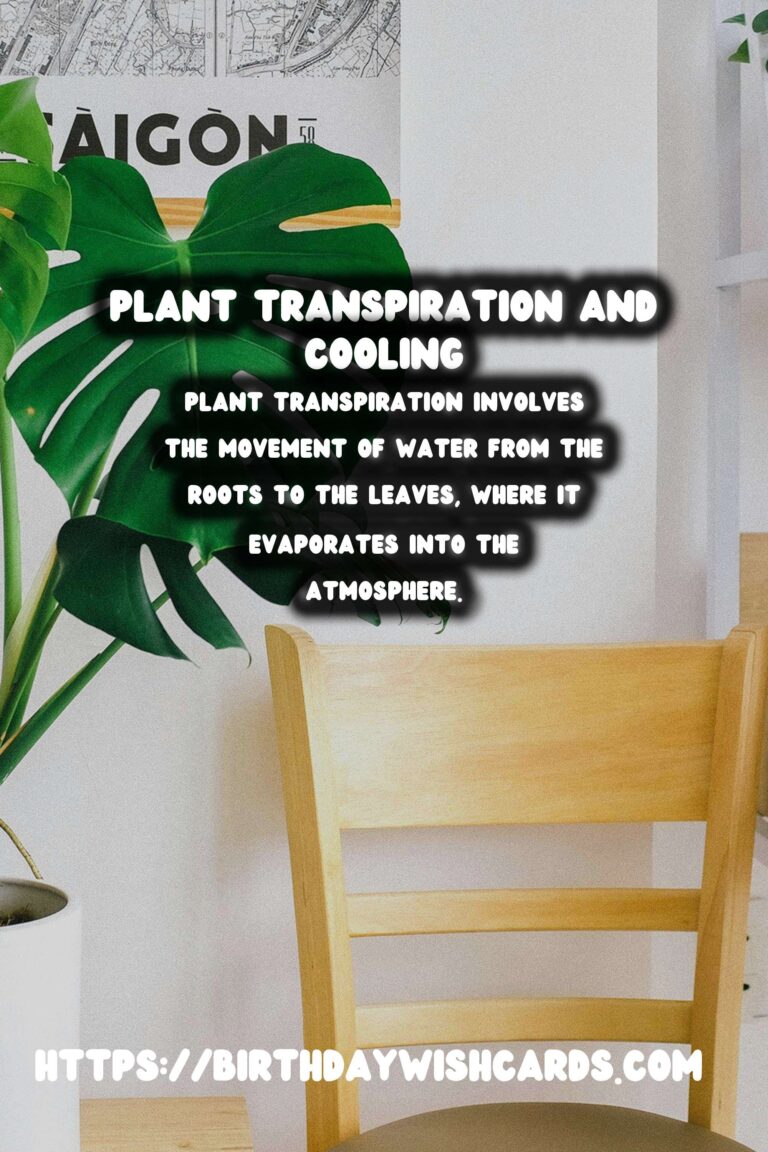
#PlantTranspiration #EnvironmentalImpact #PlantCooling #Agriculture #ClimateChange




